Creating a project plan can feel intimidating, especially if you’re not a technical manager. A systematic planning process and a simple project plan template can make things easy for you.
In this article, you’ll learn:
- What is a simple project plan?
- How do you create a simple project plan?
- Free simple project plan templates
- Pros & cons of simple project plan templates
Let’s dive in.
What Is A Simple Project Plan?
A project plan is a document that defines the project scope and outlines its objectives. It’s also called a project management plan. Because each project is unique, no two project plans are the same.
Project plans can be in the form of documents, spreadsheets, or Gantt timelines. Gantt timelines make it easy to communicate the project’s schedule across the team.
A project plan answers three basic questions:
- What activities do you need to do?
- Who will do these activities?
- When will each activity start and end?
If your project plan answers these four questions, then it’s doing the job.
You may be thinking to yourself, “That sounds great and all, but how do I answer these questions.” This brings us to the next point:
How Do You Create A Simple Project Plan?
The project planning process involves five steps.
As with anything in managing projects, a project management tool will help you do things faster and more efficiently. This tool can be project management software or a simple project planning template (shared below).
In this article, let’s take a look at Toggl Plan, a simple project planning tool that’s perfect for small and medium-sized teams.
Step #1: Define Project Scope
Establishing a clear project scope is essential before your team begins working on a project. Failure to establish scope results in scope creep. And ultimately to delayed project deliveries and sometimes complete project failure.
The project scope defines what’s included and what’s not included in the project, including:
- Goals and objectives
- Priorities
- Constraints and risks
It’s critical to document the above points in the scope document. Once the scope is approved by the client you can start with the next steps in project planning.
Step #2: Capture, Prioritize & Organize Tasks
Next, based on the project’s goals and objectives, identify the project activities. Project activities are the tasks that you must complete to deliver the project.
Record the identified tasks in your simple project plan template document.
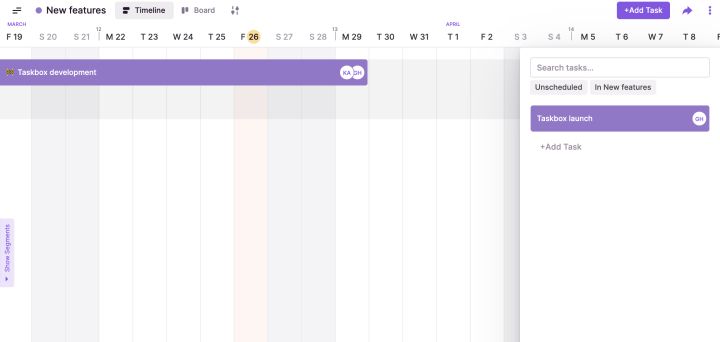
You can also add the identified tasks to the “Task Box” in Toggl Plan. The Task Box helps you capture tasks that are yet to be scheduled or assigned.
Once you’ve identified and recorded all tasks, the next step is to prioritize these tasks. Here are nine tips on how to prioritize tasks.
Depending on your project, you can also organize your tasks into phases. The end of each phase eventually marks project milestones.
Step #3: Create Project Timeline
Timelines act as your guide for a project. They tell you what needs to be done, and when it should be completed.
The timeline is the single most important feature of any project plan because it shows the estimated time a team member should spend on a task. If your timeline is off, then your whole project is off.
Learn how to make a project timeline in eight actionable steps.
Depending on task priorities and dependencies, you can schedule tasks on a Gantt timeline. To create a Gantt timeline you can use spreadsheet tools like Microsoft Excel or Google Sheets.
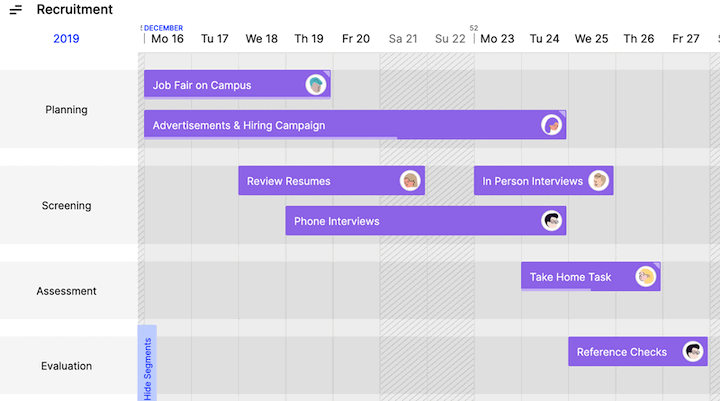
With Toggl Plan’s Plan Timelines, you can drag and drop the captured tasks on the timeline. You can also adjust the task start and end dates by dragging the task ends.
The visual timeline comes with four zoom levels. This way, you can look at the detailed schedule for a week or get an overview for the entire year.
Finally, team members and other managers can collaborate to help you create the timeline. Plus you can also share a read-only view of the timeline with clients and other stakeholders.
Step #4: Identify & Allocate Resources
Resource allocation is an entire topic in itself.
However, there are three basic steps you need to follow when managing resources.
- Identify the resources that have the skills needed to complete the identified project tasks.
- Some of these resources may not be available during your project’s schedule. Find available resources from the above step.
- Once you’ve determined resource availability, assign the available resource to a task.
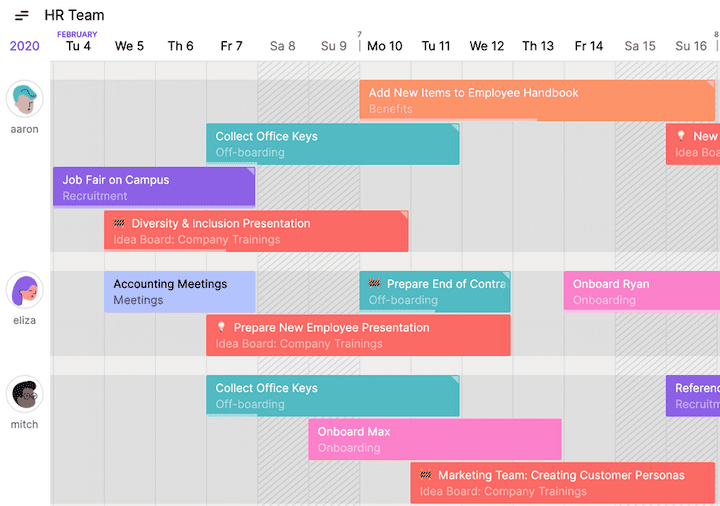
In Toggl Plan, using the Team Timeline, you can easily identify the available resources and assign them to a task. Also, based on task estimates, you can manage resource workloads from the Team Timeline.
Step #5: Add Milestones
Project milestones are intermediate checkpoints that prevent project overruns.
Large projects are divided into phases. The end of each phase marks a milestone. Dividing a project delivery timeline by milestones has the following advantages:
- Improve project success rate by dividing risks and constraints.
- Review project progress and adjust the schedule and resources accordingly.
- Communicate progress with stakeholders.
- Improve team morale with phased delivery success.
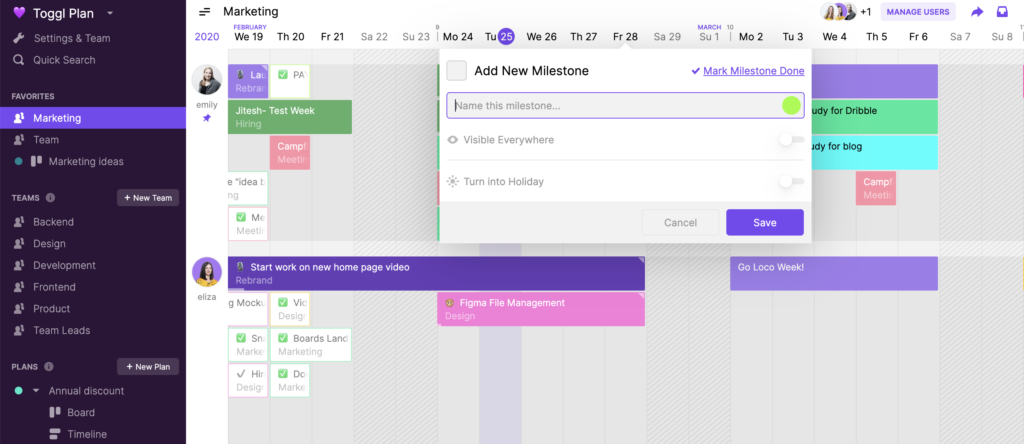
With Toggl Plan, you can easily add color-coded milestones to both Plan and Team timelines. That way everyone in the team knows about the upcoming deadlines.
Free Simple Project Plan Templates
Other than project planning tools, you can also use templates for planning projects. Simple project plan templates are readily available online. While some of these templates are premium, most can be downloaded for free.
Let’s look at some of the best template options available today.
Simple Project Plan Templates For MS Word
A few project plan templates are available for Microsoft Word. However, there’s very little flexibility compared to using a project planning tool or even a spreadsheet.
That said, here are some templates you may consider.
Project Planning Timeline
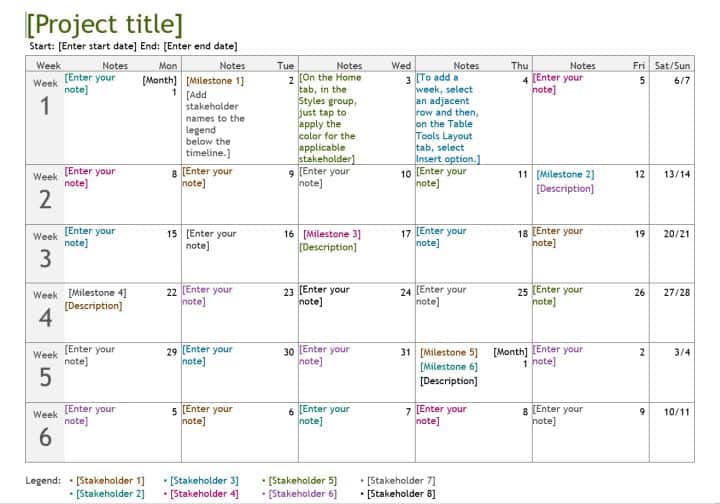
This is a simple Microsoft Word doc that you can use to track milestones and tasks. It’s a simple, six-week calendar to plan your project.
Project Plan Template For Word
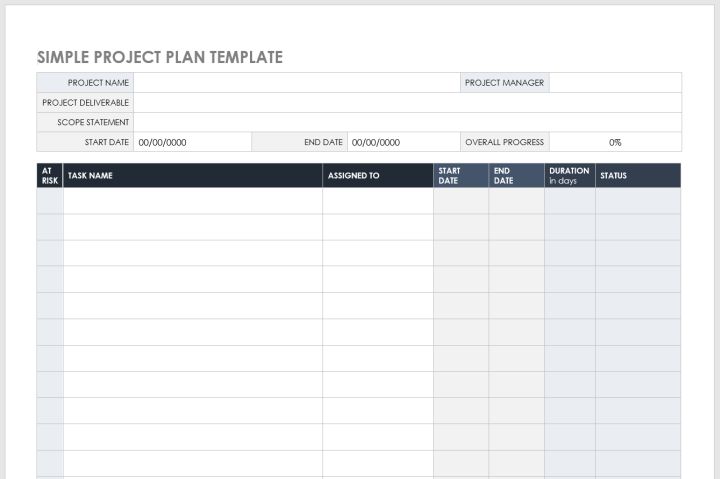
This is another simple project plan template for MS Word. With this template, you can add tasks, record start and end dates, as well as track task status.
Simple Project Plan Templates For Excel
With Excel, you have greater flexibility in managing project data. Plus, Excel formulas make it easy to calculate numeric information. Here’re the top Excel base project plan templates.
Simple Gantt Chart
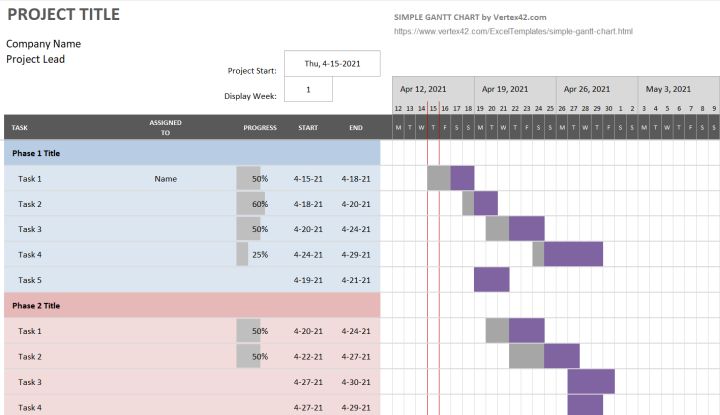
This simple Microsoft Excel template helps you create a project schedule and visualize it as a Gantt chart.
You can break the project down into phases and tasks, assign tasks to team members, as well as set task start and end dates. This free template is ideal for creating simple project plans.
Gantt Project Planner
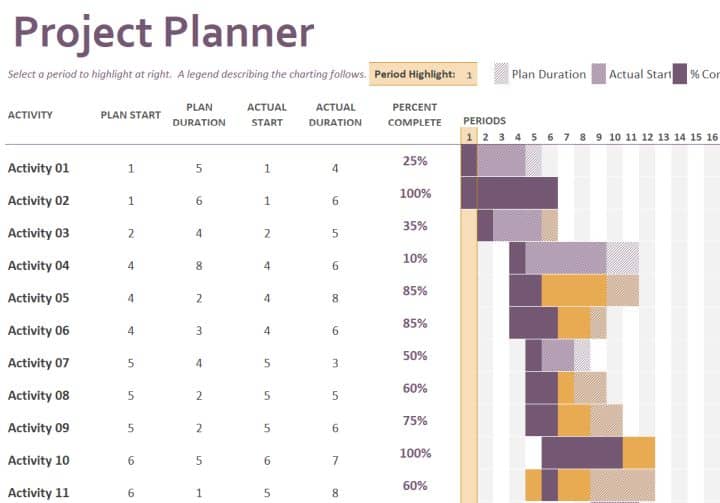
With this project planning template, you can enter a start date, duration, and status for each task.
Based on Gantt charts, this simple template helps you visualize your project’s schedule over a timeline.
Milestone & Task Project Timeline
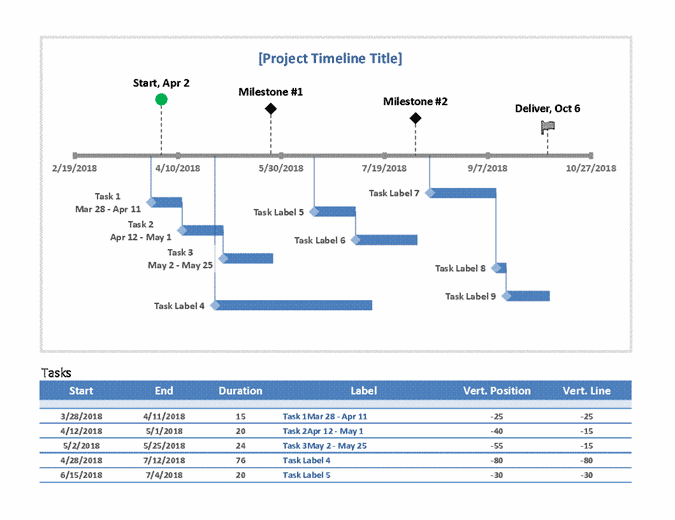
This template allows you to map both tasks and milestones on a timeline. Plus, you can easily visualize task dependencies using a scatter chart.
However, please note that this is a premium template. And is only available to Microsoft Office 365 subscribers.
Pros & Cons Of Simple Project Plan Templates
Looking at these templates, you might be wondering if these templates are too simplistic. And if there are any drawbacks to using these templates.
Sure, these templates aren’t perfect and have quite a few problems. But first, let’s look at the advantages they bring to the table.
Advantages Of Using Templates
- Saves time: Once you’ve created your template, you don’t have to waste time creating a new one every time a project comes up. You simply plug in all the details and start your project.
- Helps you plan for the big picture: When you create a simple project plan template, you’re able to strategically map out every step of the process and see the big picture more clearly.
- Ensures that you don’t forget anything: Projects include tons of details that can be easily overlooked. If you create a template, you won’t forget any of the necessary data to complete your project successfully.
- Easy to get started: Simple project plan templates are available online. Most of these templates are free. And because you’re already familiar with MS Office, you don’t need to learn anything new.
Disadvantages Of Using Project Plan Templates
- Lack of collaboration features: While you can add comments to Office documents, it’s hard to work together. Working on the same document with your colleagues can quickly become chaotic.
- Difficult to ensure data integrity: It’s easy for your colleagues to mistakenly update or delete data from the Excel sheet or document. So you have to keep backups and ensure that everyone updates the right version.
- Managing multiple versions: Eventually, as multiple versions of the template are used, you’ll need to ensure that content from each version is included.
- Poor productivity: As more information gets added to the template, everyone has to look for the specific information they need. Plus, your team has to be extra careful not to accidentally update or remove information.
A Better Alternative To Project Planning Templates
Considering the disadvantages, you may want to consider using a project planning tool. Using an online project planning tool helps you work collaboratively on project plans and saves a lot of time and energy.
As we’ve already seen, Toggl Plan makes project planning a breeze. Best of all, it’s completely free for individual users. And, project teams can sign up for a free 14-day trial to try it out.
Jitesh is an SEO and content specialist. He manages content projects at Toggl and loves sharing actionable tips to deliver projects profitably.


